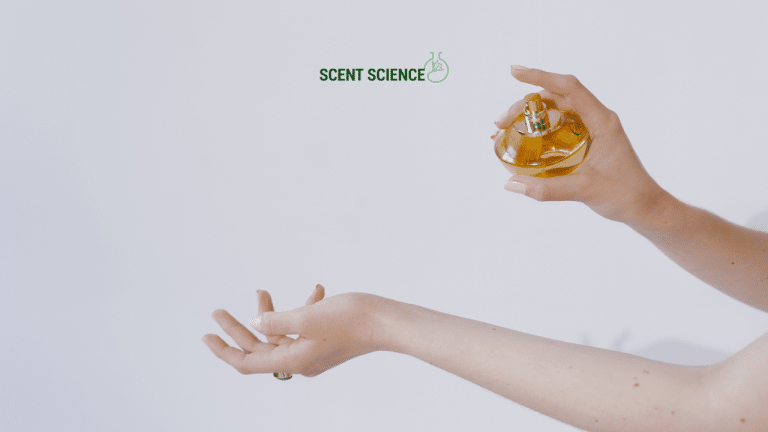Fragrances are more than mere olfactory experiences; they hold the potential to influence mood, enhance cognitive function, and contribute to overall wellbeing. This analysis delves into evidence-based research that uncovers the underlying mechanisms by which fragrance compounds interact with human sensory and psychological processes, while also exploring innovations at the intersection of technology and fragrance science.
Table of Contents
ToggleFragrance Compounds and Their Effects
The psychological impact of fragrances is primarily attributed to volatile organic compounds (VOCs) present in essential oils and synthetic aroma chemicals. These compounds interact with olfactory receptors and neural pathways connecting to the limbic system—the brain’s primary region for emotion and memory.
- Linalool and Limonene: Found in lavender and citrus oils respectively, both compounds have demonstrated anxiolytic and antidepressant properties. Studies show that inhalation of these compounds results in decreased cortisol levels and a significant reduction in stress perception.
- Vanillin: A naturally occurring compound in vanilla, vanillin is known for its calming and comforting effects. Research indicates that its sweet aroma can influence serotonin activity within the brain, fostering mood stabilization and a sense of wellbeing.
- Eugenol: Present in clove oil, eugenol partially blocks signal transduction of certain neuron pathways, offering mild sedation and analgesic effects which contribute to decreased anxiety levels.
Psychological Impacts on Mood and Cognitive Function

Fragrances impact cognitive states through both direct and associative learning processes. Odors can trigger past memories and influence task performance:
- Memory Enhancement: Aromas like rosemary have been shown to improve memory recall. The compound 1,8-cineole, abundant in rosemary, is thought to increase acetylcholine levels—facilitating cognitive functions such as memory and learning.
- Cognitive Performance: Peppermint oil, containing menthol, enhances alertness and concentration. Studies correlate inhalation of peppermint aroma with improved athletic performance and cognitive stamina.
Hypoallergenic Fragrance Options

Given the rise in sensitivity to allergens, hypoallergenic fragrances become crucial. Hypoallergenic fragrances aim to minimize the risk of skin and respiratory irritations through careful selection of non-reactive ingredients:
- Use of Non-Fermentative Compounds: Selecting molecules that are less likely to oxidize reduces skin sensitization risks commonly exacerbated by exposure to environmental factors.
- AI-Driven Formulation: Leveraging artificial intelligence enables the identification and exclusion of potential allergens at the molecular level. Databases of known allergenic compounds guide these formulations to optimize safety without compromising olfactory complexity.
Technological Advances in Fragrance Science

The integration of technology, particularly AI, heralds a new era in personalized fragrance creation and delivery:
- AI-Assisted Personalization: By analyzing individual genetic makeup, lifestyle, and scent preferences, AI can craft bespoke fragrances that synergize with personal psychological profiles, enhancing emotional and cognitive benefits tailored to the individual.
- Smart Devices: Devices that emit variable fragrances based on real-time biofeedback—from wearable biosensors—can dynamically adjust the ambient fragrance environment to promote relaxation, focus, or energization according to the user’s immediate needs.
In conclusion, the interaction between fragrance compounds and human psychophysiology underscores the profound impact scent has on psychological wellbeing. Through ongoing research and technological strides, the field continues to evolve, offering more nuanced and beneficial fragrance products designed to enhance mental and emotional health.
Frequently Asked Questions
What is the scientific basis for mood-enhancing scents?
Mood-enhancing scents are based on the scientific understanding that fragrances can directly influence the brain’s limbic system, which is responsible for emotions and memory. When inhaled, fragrance compounds cross the blood-brain barrier and interact with receptors in the central nervous system, modulating brain functions such as mood, cognition, and emotional responses[1][2][5>.
Which specific scents have been clinically proven to enhance mood?
Clinical studies have shown that certain scents, such as lavender, citrus (e.g., sweet orange oil), and specific terpenes like linalool and limonene, have mood-enhancing effects. For example, lavender has been extensively researched for its calming effects and ability to ease stress and anxiety, while citrus scents have been found to have stimulating effects on the brain and body[2][5][4>.
How do these scents affect the brain and body?
When these scents are inhaled, they trigger immediate changes in physiological parameters such as blood pressure, muscle tension, pupil dilation, skin temperature, and pulse rate. They also activate specific brain waves and areas of the brain associated with emotions, such as the amygdala and hippocampus, leading to improved mood and reduced stress[1][2][3>.
Are there any specific technologies or methods used to develop these mood-enhancing scents?
Yes, companies in the fragrance industry use advanced technologies such as fMRI and proprietary AI tools to study and measure brain activity in response to different scents. This data is used to create fragrance accords that are designed to trigger specific emotional responses, such as joy or calmness[2][3>.
References






